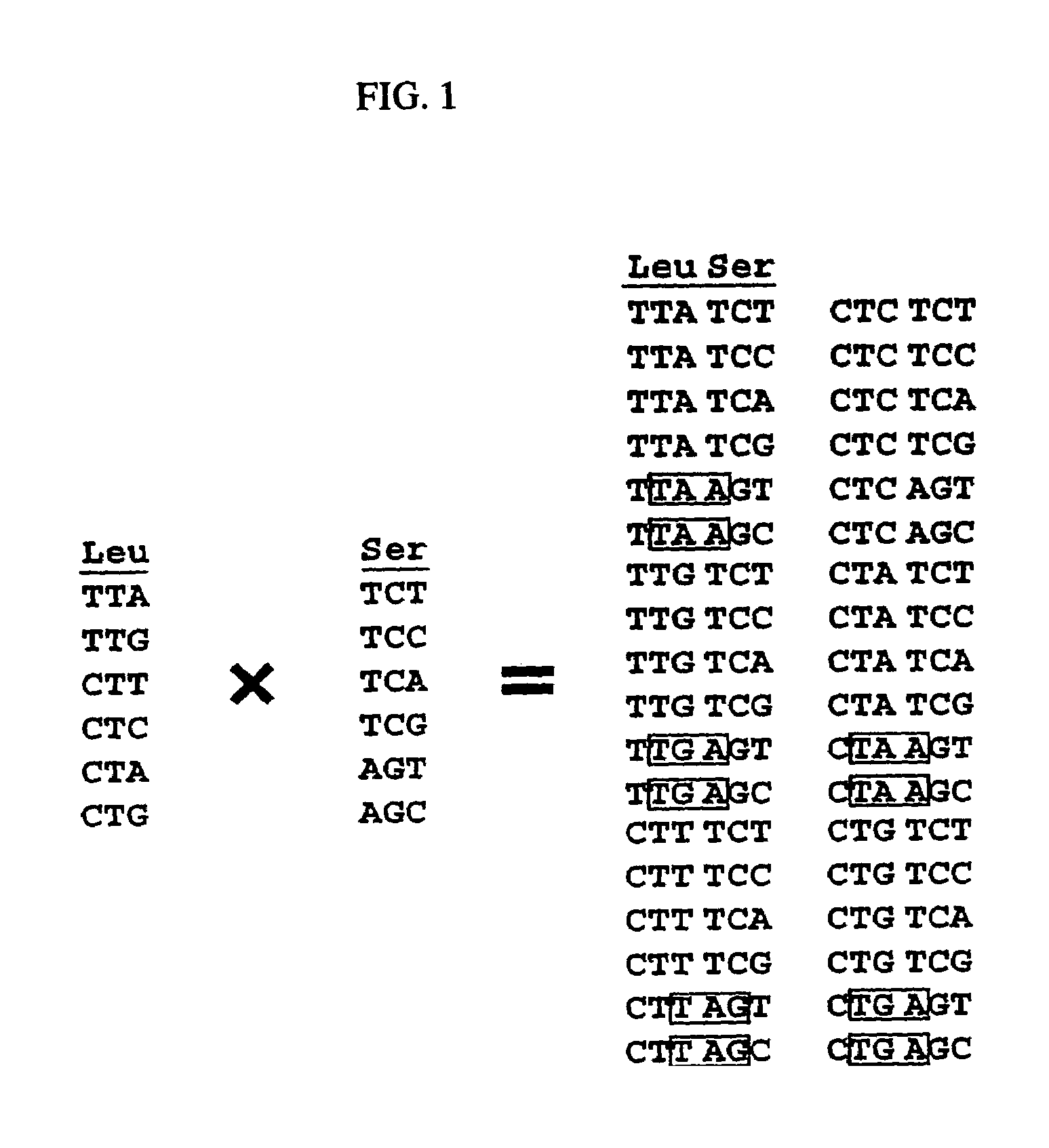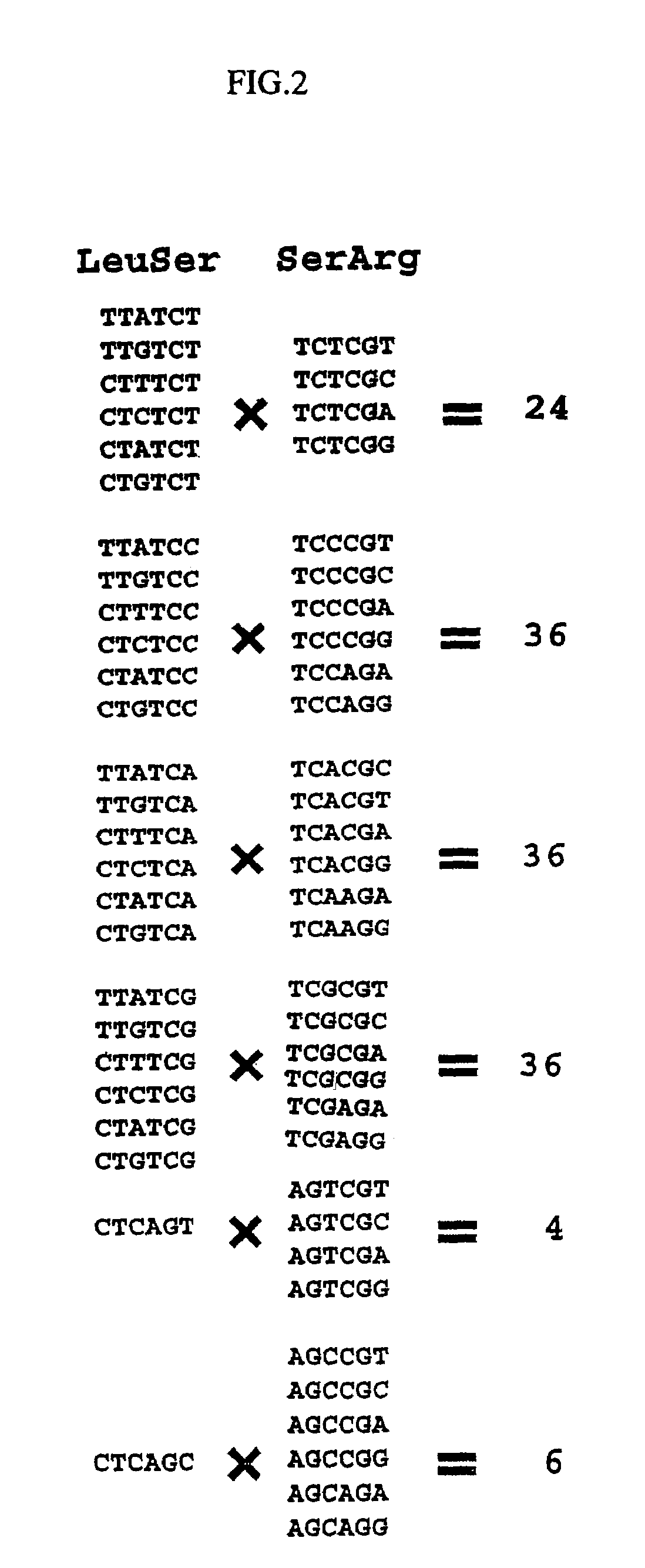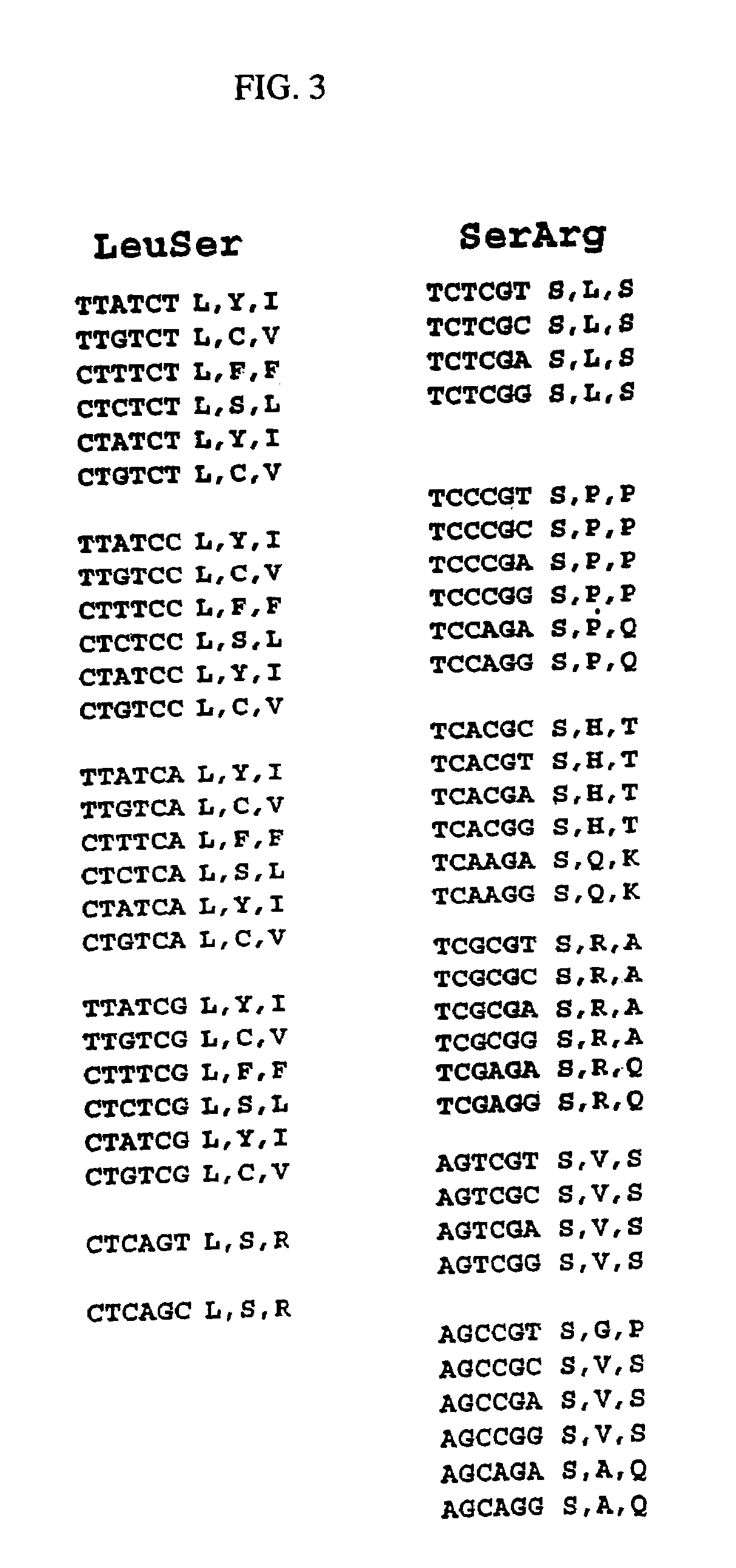Method of designing multifunctional base sequence
a multifunctional base sequence and design technology, applied in the field of computational science for designing multifunctional base sequences, can solve the problem of requiring a large amount of calculation tim
- Summary
- Abstract
- Description
- Claims
- Application Information
AI Technical Summary
Benefits of technology
Problems solved by technology
Method used
Image
Examples
example 1
[0055]A primary sequence NGNNGNNGNNGNNGNNGNGNNGNNGG (S1) (SEQ ID NO: S1) was given and among base sequences which encode this peptide sequence consisting of asparagine (N) and glycine (G), those not containing termination codons were generated on the processor according to the processing flow chart shown in FIG. 5. The number of total patterns of base sequences encoded in the first reading frame of this peptide sequence counts as much as 687×108 variants approx., and in conventional methods all of such base sequences were processed. However, by adopting the algorithm using the “nucleic acid sequence-dipeptide corresponding table” of the present invention, processing is only required for 4×107 variants approx. which do not contain translation termination codons in the second and third reading frames. As a result of this, the calculation time was shortened to about 15 minutes when the algorithm of the present invention was applied, in contrast to the fact that it took about two weeks ...
example 2
[0056]Similarly as in Example 1, a primary sequence YNGDNGNNGDNGNNG (S2) (SEQ ID NO: S2) was given and DNA sequences encoding this peptide sequence were generated on the processor. The total patterns of base sequence variants encoded in the first reading frame were approximately 1×106. However, when the algorithm according to the “nucleic acid sequence-dipeptide corresponding table” of the present invention was applied, it was proved that the processing should only be carried out for about 1×104 variants that had no translation termination codons in the second and third reading frames.
example 3
[0057]In a similar manner as in Example 1, a primary sequence NGNGNGNGNGLNYLKSLYGGYG (S3) (SEQ ID NO: S3) was given and DNA sequences encoding this peptide sequences were generated. The total patterns of base sequence variants encoded in the first reading frame were approximately 87×109. However, when the algorithm according to the “nucleic acid sequence-dipeptide corresponding table” of the present invention was applied, it was proved that the processing should only be carried out for about 57×107 variants that had no translation termination codons in the second and third reading frames.
PUM
| Property | Measurement | Unit |
|---|---|---|
| structures | aaaaa | aaaaa |
| volume | aaaaa | aaaaa |
| length | aaaaa | aaaaa |
Abstract
Description
Claims
Application Information
 Login to View More
Login to View More - R&D
- Intellectual Property
- Life Sciences
- Materials
- Tech Scout
- Unparalleled Data Quality
- Higher Quality Content
- 60% Fewer Hallucinations
Browse by: Latest US Patents, China's latest patents, Technical Efficacy Thesaurus, Application Domain, Technology Topic, Popular Technical Reports.
© 2025 PatSnap. All rights reserved.Legal|Privacy policy|Modern Slavery Act Transparency Statement|Sitemap|About US| Contact US: help@patsnap.com



